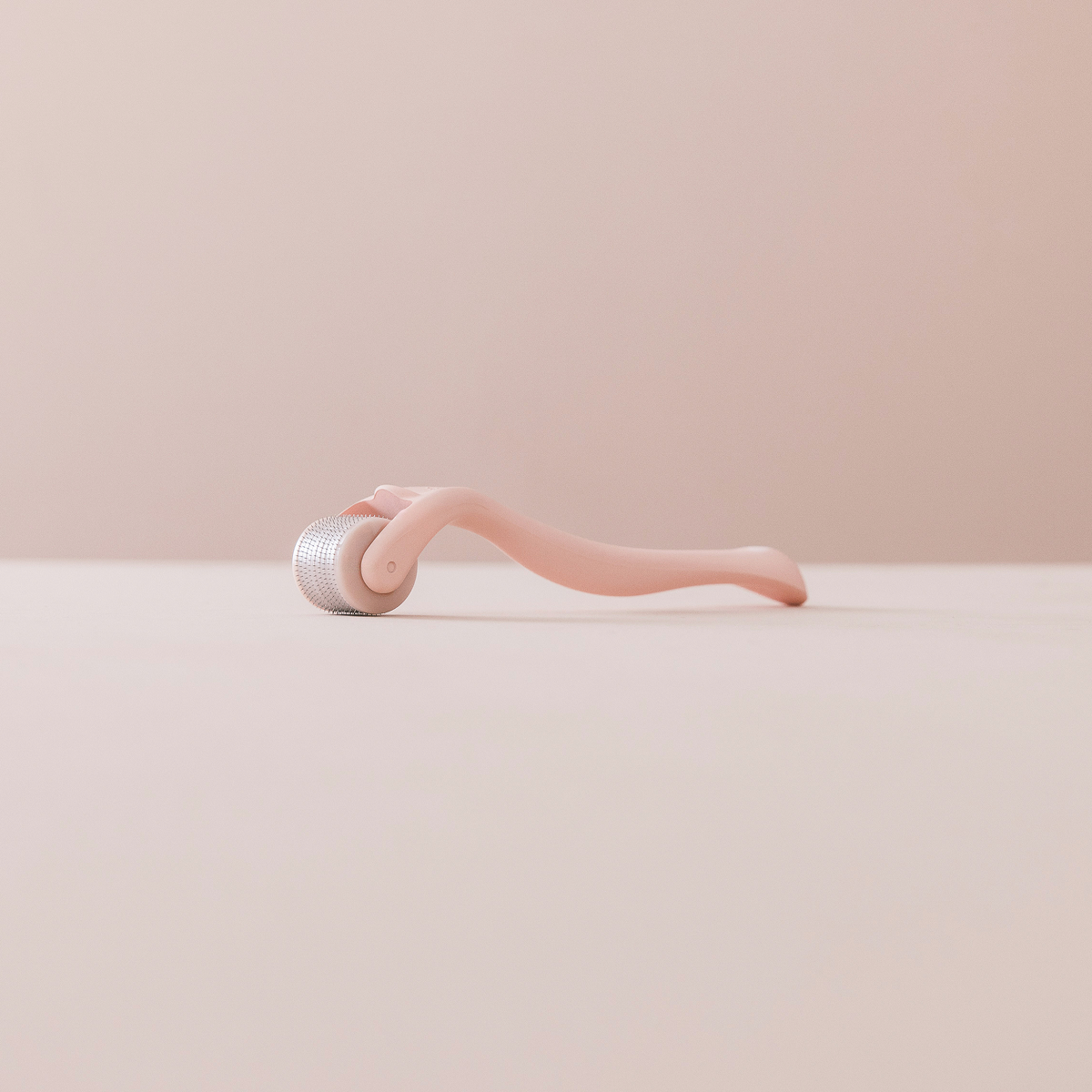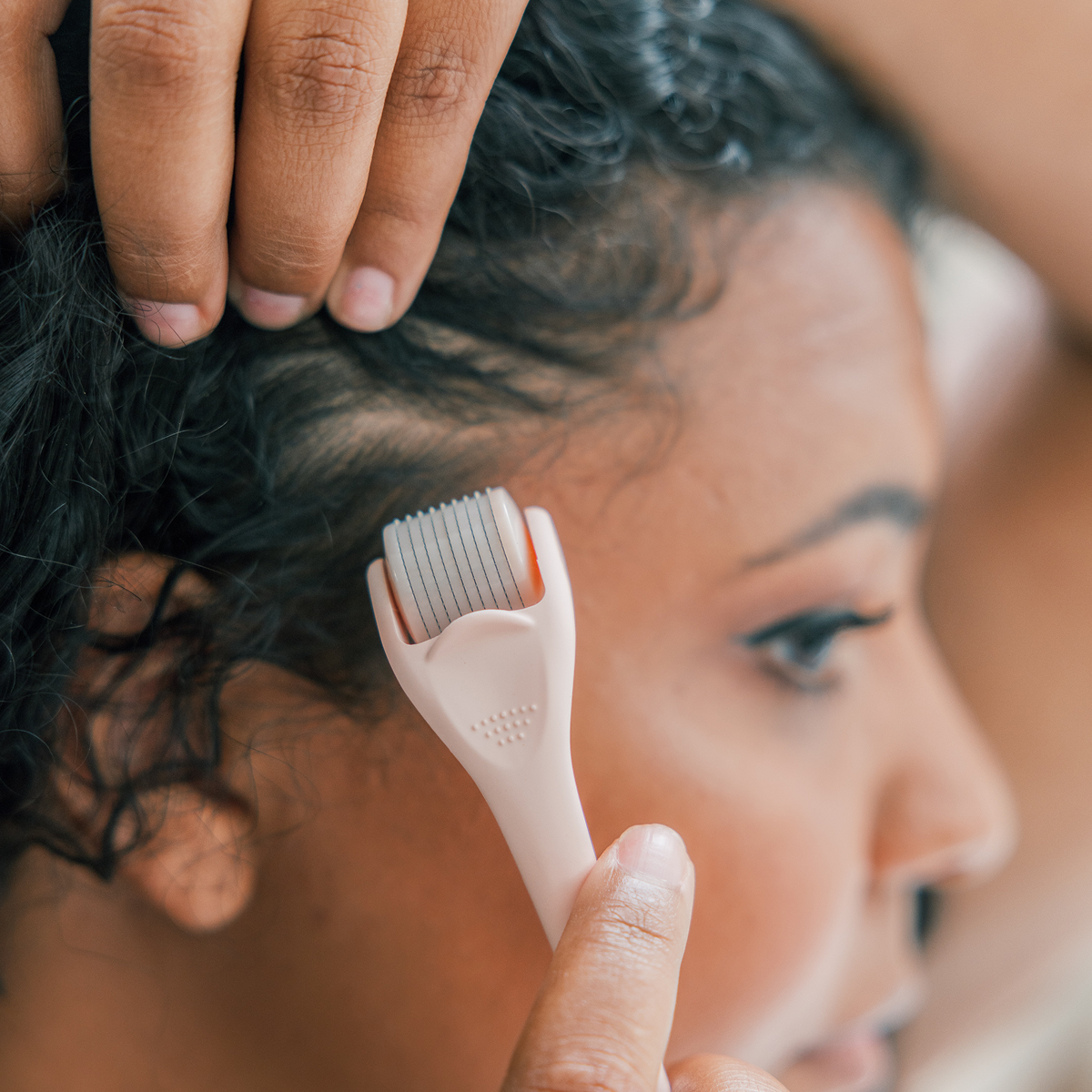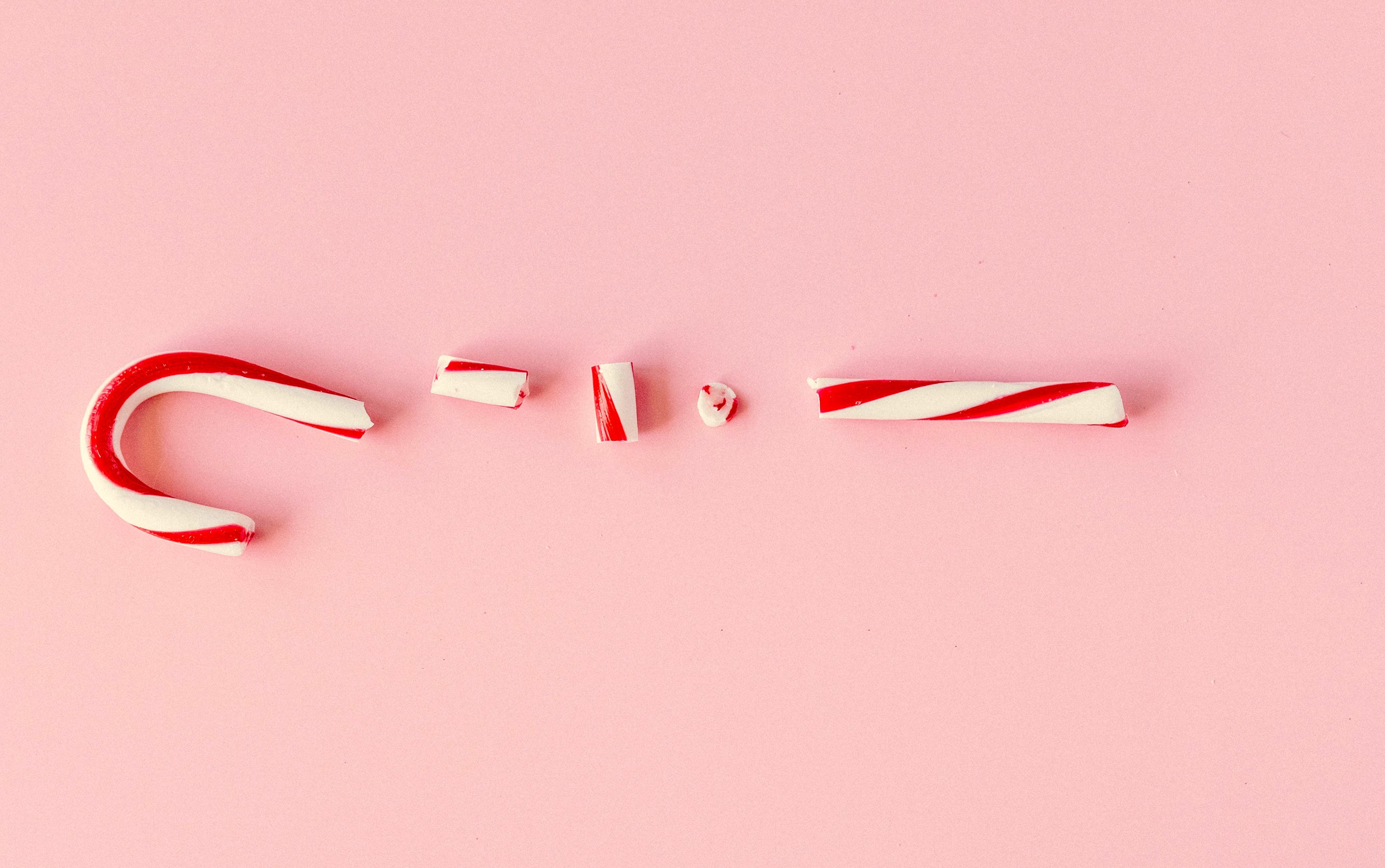Losing hair is a normal part of everyday living. But if you’re looking at your hair brush, or notice how much hair falls out in the shower, you might be wondering, what’s a normal amount of hair loss? Am I losing too much hair too quickly?
If this is something that’s been on your mind, I got you covered! Let’s talk about…
- The hair growth cycle
- Normal hair loss rates
- Signs of excessive hair loss
- Major causes of hair loss
- What to do moving forward
How Does Your Hair Grow?
To understand the speed of hair growth and hair loss, you need to learn about the hair growth cycle. The process of hair growth is initiated by the division of cells in the hair follicles. As new cells form, they push older cells upward, creating the hair strand. Blood vessels provide nourishment to the hair follicles, ensuring optimal growth. This hair growth cycle for each hair follicle consists of four phases:
- Anagen
During the anagen phase, which is the active growth stage, hair cells within the hair follicles divide rapidly to form new hair. This phase can span anywhere from two to seven years, and your hair grows around ½ inch per month.
2. Catagen
The catagen phase serves as a transitional period, where hair growth decelerates as the hair strand disconnects from the blood supply. This phase typically lasts for about two to three weeks.
3. Telogen
In the telogen phase, the hair strand reaches full maturity, becomes dormant, and is poised to be naturally released and replaced by a new hair strand. This resting phase extends for several weeks to months.
4. Exogen
The exogen phase marks the shedding stage, or the final step in the hair growth cycle. The dormant hair strand sheds, creating space for a new hair sprout and restarting the cycle. The exogen phase may last for several weeks to months.
How Much Hair Loss Is Normal?
So now we get to the big question: how much hair loss is normal? On average, you shed 50 to 100 hair strands a day. For the average person, that is quickly replaced with similar hair growth. If you shed more than 50 to 100 hair strands a day, or have no hair growth to replace it, you may have a hair loss condition.
You may naturally experience more hair shedding during certain seasons, like fall, or other environmental factors like humidity and temperature. The same is true as you age — you may experience an increase in hair shedding. Your ethnicity, hair type, and genetics can all play a role too.
However, if you feel you are suddenly losing more than 100 hairs a day, it may not be a natural cause at all. It may be a condition triggering your body to shed more and not replace the hair.
How Can You Tell If You’re Shedding More Than Normal?
So how can you tell if you’re shedding hair more than necessary? Here’s some signs to watch out for:
- More than 100 hair strands on your pillowcase or hair brush, or in your shower
- Receding hairline, bald spots, and uneven patches
- Noticeable changes in hair thickness, especially along the part or crown
- Noticeably less hair volume
The earlier you notice these signs, the better for making lifestyle and nutrition changes to help slow the rate of hair loss.
Hair Shedding vs. Hair Thinning
Another important thing to keep in mind is the difference between hair shedding and hair thinning. Shedding is a natural part of the hair growth cycle, and when it’s a normal amount, it’s nothing to be scared of. On the other hand, hair thinning involves a reduction in thickness, often due to a prolonged telogen phase. Shedding tends to be influenced more by stress, while thinning is more related to genetics or hormonal imbalances.
Major Causes of Hair Loss
If you’re experiencing more hair shedding, hair thinning, or overall hair loss, there’s a few potential causes.
- Genetics and Hereditary Conditions: Genetics aren’t everything but they may make you more likely to develop certain hair loss conditions. For example, individuals with a family history of male/female pattern baldness could be more susceptible to experiencing similar hair loss.
- Hormonal Changes and Imbalances: Fluctuations in hormones, particularly androgens like dihydrotestosterone (DHT), can have a substantial impact on hair health. For women, significant life events such as pregnancy, childbirth, or menopause may lead to temporary or prolonged hair loss. Conditions like polycystic ovary syndrome (PCOS) can also cause hormonal imbalances, leading to hair thinning and hair loss.
- Medications: Specific medications, including chemotherapy drugs and medications for conditions like arthritis and depression, may have consequences for hair thinning. It’s important to check for potential hair loss side effects when taking new medications.
- Nutritional Deficiencies: Essential nutrients are crucial for healthy hair growth and avoiding hair loss, including vitamin A, B vitamins, vitamin D, vitamin E, and minerals like iron and zinc. Poor diet and insufficient intake of these essential nutrients can weaken hair strands, affecting their thickness, strength, and overall health. That’s why a balanced diet and nutrition matters so much for hair growth.
- Sleep Deprivation: Poor sleep can disrupt various physiological processes, including those related to hair health. Sleep deprivation may contribute to increased hair loss since it affects the normal growth cycle of hair follicles. Prioritizing a healthy sleep routine, including enough hours of restful sleep, is essential for maintaining optimal overall well-being and healthy hair growth.
- Stress: Physical or emotional stress can have a direct impact on the hair growth cycle. Chronic stress can lead to a condition known as telogen effluvium, where a significant number of hair follicles enter the resting phase at the same time and cause noticeable shedding. Managing stress through relaxation techniques, exercise, self-care, and other stress-reduction methods can positively influence overall hair health.
How to Stop Hair Shedding and Hair Loss

There’s lots of little lifestyle changes you can make to help prevent hair damage and other factors that cause hair loss. Check out our full article on Top 8 Most Common Hair Mistakes We See to learn more lifestyle habits to avoid and 7 Healthy Hair Habits for a Happy New Year for ideas on where to start.
If your hair needs extra support beyond lifestyle changes, you can turn to natural solutions like our Growth Complex. This is a daily vitamin packed full of powerful natural ingredients that work synergistically to stop excessive shedding, breakage, and thinning.
Here’s more of what sets our Growth Complex apart:
- All natural ingredients (no scary chemicals or hormones)
- Cynatine HNS (an ingredient that keeps hair in its growth phase longer)
- Bioperine (an ingredient that enhances the effectiveness of the other ingredients)
In my own personal hair loss journey, it was these natural ingredients together that finally made the difference for me. If you’re struggling, just know we are here to help every step of the way. You don’t need to live with hair loss. It’s time you take your hair and health back once and for all!
Growth Complex isn't just for women...check out our Growth Complex for Men.



























